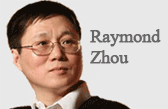Service plays bigger role as Chinese economy sees steady growth
By Yao Shujie (chinadaily.com.cn) Updated: 2016-07-18 11:24Official statistics for the second quarter of 2016 have now been released, showing the headline GDP growth rate at 6.7 percent, exactly equal to the level achieved in the first quarter.
Despite the slowdown in private sector investment at an annualized rate of 2.8 percent, the growth rate of total social investment reached 9 percent in the first half of the year. The volumes of total trade and exports expanded 0.1 percent and 1.2 percent respectively in the second quarter compared to the first quarter, arresting the declining trend in China’s global trade.
The volume of imports dropped by 1.2 percent in the same period, improving by 7.2 percentage points from the first quarter. For China, this is a very good sign as international trade has been a strong pulling force on economic growth.
Although it is a relative low level of economic growth compared to the past, China managed to create 7.17 million new jobs in the first half of the year, a level admirable by any international standards and an encouraging sign that economic structural change has started to generate excellent results.
Reflected by the changing composition of the three economic sectors, agriculture, industry and services, the structure of the national economy continues to improve, with the services industry growing much faster than manufacturing and agriculture. In the first half of 2016, the services industry, manufacturing and agricultural value-added grew respectively at 7.5 percent, 6.1 percent and 3.1 percent. The services industry has now accounted for 54.1 percent of the country’s GDP, which is 14.7 percentage points higher than the share of the manufacturing sector.
Both rural and urban incomes have maintained a steady pace of improvement. In the first half of 2016, urban per capita disposable income was 17,000 yuan ($2,543), growing by 5.8 percent, and rural per capita net income 6050 yuan, growing by 6.7 percent, showing a narrowing trend of urban-rural income disparity. The urban-rural per capita income ratio has declined from its peak of over 3.3 before the world financial crisis to 2.8 today. Although this is still a high level of urban-rural income inequality, the current economic reform has benefited the rural population more than its urban counterpart.
It is obvious that the uncertainty in the world economy, especially the decision of the UK to leave the EU, has imposed significant challenge to China’s economic growth, as international trade and the pressure on RMB exchange depreciation are now the most serious factors hindering China’s ability to export and import. However, China has entered a development stage where future growth has to come from its ability to stimulate domestic growth, through reducing the gap between the rich and poor regions, integrating the urban and rural sectors, and providing essential stimuli in public investments, particularly the high-speed train railways network and other infrastructure which are essential for the private economy.
Domestic challenges cannot be undermined, as the pressure to reduce industrial overcapacity, assets as well as housing bubbles, and to up-grade technologies is high, and the process of change is slow.
From the newly released statistics, what is encouraging is that the growth rate of value-added of the high-tech and newly emerging industries, including medicines, aerospace and ICT, are growing much faster than the traditional ones. The value-added of these industries increased 11.8 percent, compared to 6 percent of the entire manufacturing sector in the first half of 2016.
Consumer demand continues to become the most powerful driving force of economic growth in China. The volume of retail sales expanded by 10.3 percent in the report period. As a result, the services industry contributed 73.1 percent of economic growth in the first half of 2016, or 13.2 percentage points higher than the same period in 2015. The contribution of investment to GDP growth was 37 percent, but the contribution of net exports was minus 10.4 percent.
There are a few important features in the Chinese economy in recent years under the “new normal”. First, the slowdown in economic growth has been caused by the slowdown or even negative growth in the external sector, and steady economic growth has to rely on domestic investments and consumption. Second, there is a significant shift from manufacturing to services as the main engine of economic growth. Third, there is a clear trend of regional economic convergence and the narrowing of the urban-rural income disparity. Last, but not least, the energy/electricity intensity, measured by the requirements of energy/electricity for each additional unit of GDP, has declined sharply.
The narrowing of regional development and urban-rural income disparities is critically important for China in its ambition to realize domestic endogenous growth, and to eliminate absolute poverty by 2020. The declining energy/electricity intensity is also important for China to sustain its long term economic growth without further deteriorating the natural environment.
China may not be able to achieve a much higher level of economic growth in the short and medium terms, but the growth rates in the most recent four quarters at 6.9 percent, 6.8 percent, 6.7 percent and 6.7 percent means that the bottom of economic growth may have been reached. This also suggests that if the world economy can recover well in the aftermath of the world financial crisis and the European debt crisis enabling China to trade more with other countries, it is possible that future growth can be higher than the current level.
However, even when the world economy is not recovering well, China has demonstrated its strong resilience to the very harsh external and internal conditions in the first half of 2016. In other words, the worst may not be over, but China’s ability to achieve this level of growth in GDP, employment and people incomes should provide strong confidence for the rest of the world. It also shows China is clearly on the right track to fulfill the development targets set by the 13th Five Year Plan, as one of the key goals is to maintain a growth rate of not less than 6.5 percent.
The author is professor of economics at Chongqing University and Nottingham University.
The opinions expressed here are those of the writer and don't represent views of China Daily website












